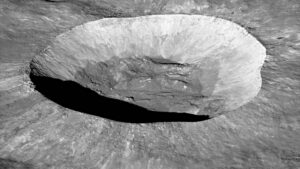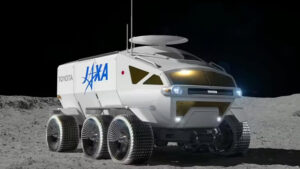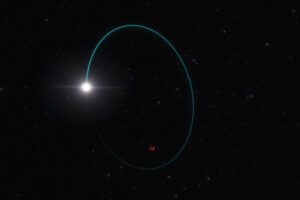A passion for the natural world drives many of our adventures. And when we’re not outside, we love delving into the discoveries about the places we live and travel. Here are some of the best natural history links we’ve found this week.
The Sharknado attitude
Shark vs Orca: Is fearing either rational?: Orcas and great white sharks are among the most feared ocean creatures. Statistics show that a shark is more likely to bite a human than an orca. But statistics also show you that a person is more likely to bite you in the water than an orca. In fact, there is only one documented case of a wild orca attacking a human.
One of the reasons for this is that killer whales “tend to be found in higher densities around cold, high-latitude regions. These are areas where the water is not particularly inviting for the average beachgoer,” marine mammal researcher Emma Luck explains.
In truth, no matter the water temperature, both sharks and orcas are incredibly unlikely to bother you.
Voyager probes: less memory than a cell phone
Voyager logs 45 years in space: NASA’s twin Voyager probes have now been in space for 45 years. They are the only probes that have explored interstellar space, the vast region our sun and solar system travel through.
NASA launched Voyager 2 on August 20, 1977, and Voyager 1 16 days later on September 5. They first went to Saturn and Jupiter. Voyager 2 then became the first and only spacecraft to get close to both Uranus and Neptune. At every stop, they captured images and provided insight into previously unseen worlds.
As Voyager 2 circled the planets, Voyager 1 went to the edge of the heliosphere. It stayed there until 2012 and discovered that the heliosphere blocks 70% of the cosmic rays emitted by exploding stars.
After decades in space, they are now older than many of the researchers operating them, and much of their technology is outdated. The probes have three million times less memory than a modern cell phone. Despite this, they are still at the forefront of space exploration.
“We don’t know how long the mission will continue but we can be sure that the spacecraft will provide more scientific surprises as they travel farther away from Earth,” said Suzanne Dodd, project manager for Voyager at JPL.

One of the Voyager probes in the space simulator chamber at NASA’s Jet Propulsion Laboratory, April 27, 1977. Photo: NASA/JPL-Caltech Photojournal
A missing membrane
The evolutionary change that helped pave the way for human speech: Scientists have discovered evolutionary differences in the voice boxes of humans when compared to other primates. This difference may be the reason we can speak.
Scientists analyzed the voice boxes of 43 species of primate. The human larynx was missing two things the other 42 contained, a vocal membrane and an air sac. The missing tissues have allowed humans to make long, stable speech and control the pitch of their voices.
“The more complicated vocal structures in non-human primates can make it difficult to control vibrations with precision,” said primatologist Takeshi Nishimura.
Giant meteorite impact created the continents: New research suggests that giant meteorite impacts formed Earth’s continents. This theory has been around for decades but until recently there had been very little evidence to support it.
Researchers have been analyzing zircon crystals from the Pilbara Craton in Western Australia. They are the best-preserved remains of Earth’s ancient crust. The composition of the oxygen isotopes in the crystals is similar to that found at sites of giant meteorite impacts.
“Our research provides the first solid evidence that the processes that ultimately formed the continents began with giant meteorite impacts, similar to those responsible for the extinction of the dinosaurs, but which occurred billions of years earlier,” geologist Tim Johnson said.

Tiny holes found in a regularly repeating pattern on the seafloor. Photo: NOAA
A mystery digger
‘Alien’ holes on the ocean floor: Researchers have discovered a set of perfectly aligned holes in the seafloor. The row of holes is 2.6km below the surface and researchers have no idea where they came from.
The team on the NOAA Oceans Explorer found the unusual pattern on the Mid-Atlantic Ridge, a relatively unexplored region. The holes are set in a straight line at regular intervals. A little mound of sediment surrounds each hole. They are similar to holes found in the area in 2004 by two marine scientists. At the time, the scientists proposed that an organism living in the sediment made the little holes, but no one has seen anything behave in this way.
“These holes have been previously reported from the region but their origin remains a mystery. While they look almost human-made, the little piles of sediment around the holes make them seem like they were excavated by…something,” NOAA researchers said.
New detection system could save whales from ship strikes: A research team in Greece has developed a new whale detection system. They are testing the prototype, known by the acronym SAvEWhales, in the Mediterranean Sea.
In the area, the leading cause of death for sperm whales is ship strikes. The new system uses the sperm whale’s clicks to detect their location with an accuracy of 30-40m. Testing has shown it can detect this early enough that nearby ships would have time to alter their path or slow down to avoid the whales.
The system uses hydrophones to pick up the sounds. The time taken for the sound to reach the different hydrophones allows the system to calculate the whale’s position. For each click, the scientists realized they could hear a second fainter click. It is the reflection of the click as it bounces off of the surface of the water. After realizing this, the scientists were also able to calculate the depth of the whale.






